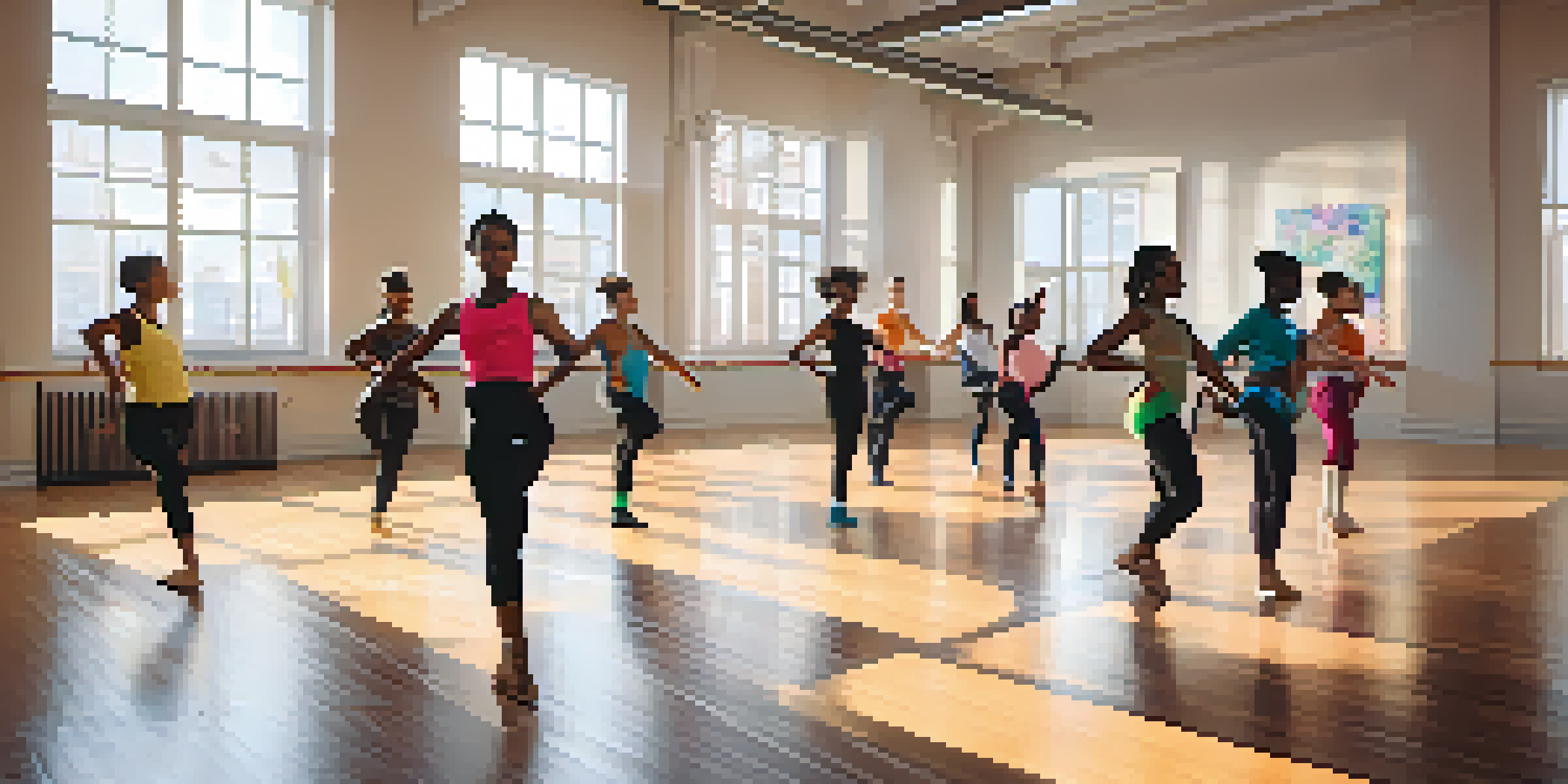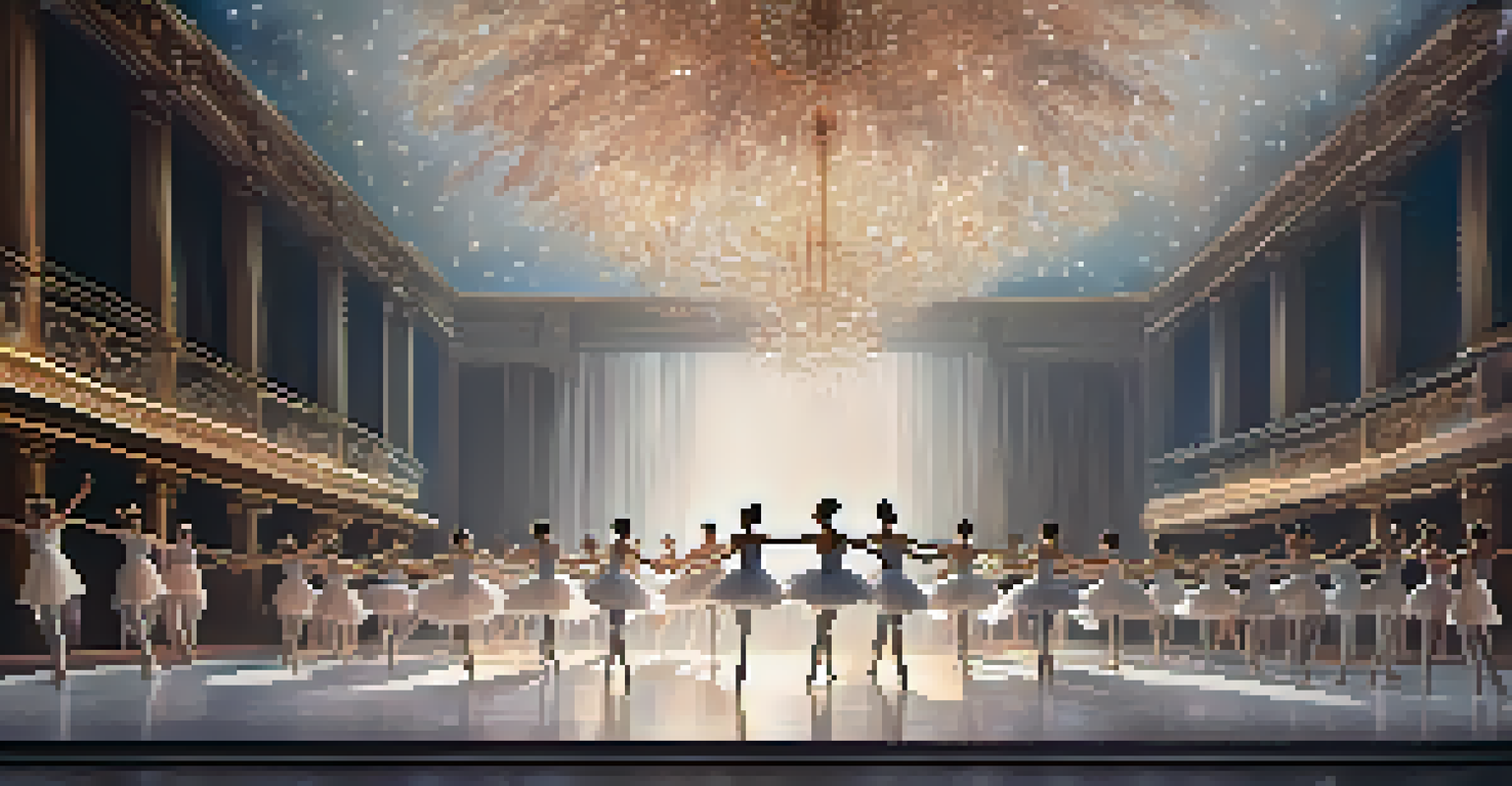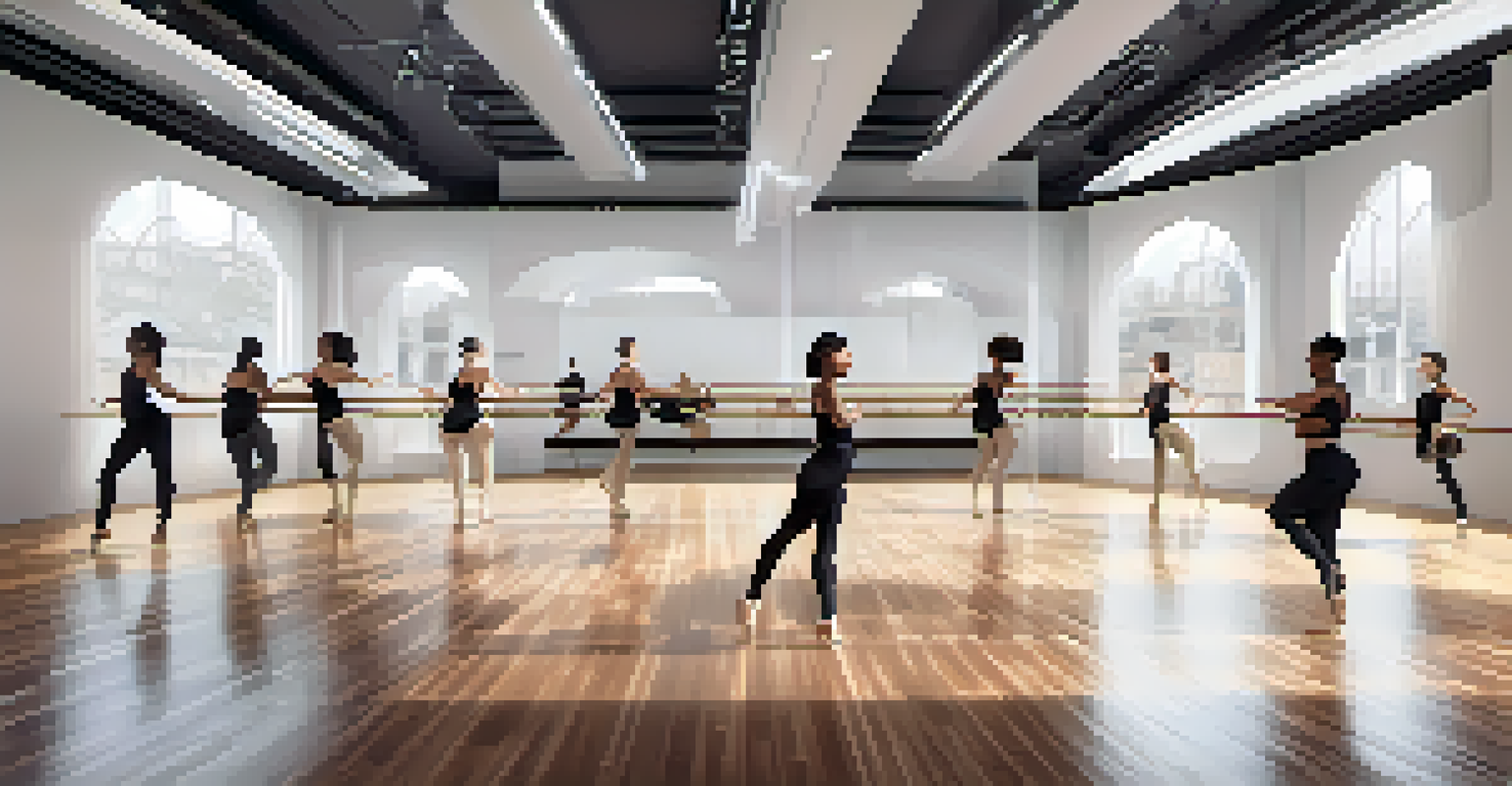Dance in the Digital Age: Virtual Reality Experiences Explored

The Evolution of Dance: From Stage to Screen
Dance has always been a dynamic art form, but in the digital age, its evolution has taken a fascinating turn. With the advent of technology, traditional performances have found new life on screens, allowing audiences to engage in ways previously unimaginable. This shift opens a world of possibilities, making dance more accessible to people who may not have the chance to attend live shows.
Dance is the hidden language of the soul.
As we embrace digital platforms, dance can reach audiences across the globe. Performances can be streamed in real-time, or available on-demand for anyone to enjoy from the comfort of their homes. This accessibility not only broadens the audience but also introduces diverse styles and cultures of dance to those unfamiliar with them.
Moreover, the digital age has sparked innovative collaborations between dancers and tech creators. This synergy is not only reshaping how dance is presented but also how it is experienced, bringing us to the exciting realm of virtual reality.
Virtual Reality: A Game Changer for Dance
Virtual reality (VR) is revolutionizing the way we experience dance by immersing us in a 3D environment. This technology allows users to step into a virtual space where they can watch performances as if they were part of the audience or even on stage. Imagine being right in the middle of a mesmerizing ballet, surrounded by dancers without leaving your living room.

In VR, the experience is not just about watching; it's about participation. Users can engage more actively, learning choreography or even dancing alongside their favorite performers. This interactivity transforms passive viewers into active participants, offering a unique opportunity to explore dance in a personal way.
Digital Dance Expands Accessibility
The digital age allows dance performances to reach global audiences, making diverse styles accessible from home.
Additionally, VR can cater to various skill levels, making it an excellent tool for both amateurs and seasoned dancers. Whether you're looking to practice your moves or simply enjoy a captivating performance, virtual reality offers something for everyone.
Creating Dance Experiences: The Technology Behind VR
The magic of virtual reality lies in the technology that powers it. High-quality cameras and 3D modeling software are used to capture every detail of a performance, creating a lifelike experience for users. This meticulous process ensures that viewers can appreciate the nuances of movement, emotion, and expression as if they were right there in the theater.
Technology is best when it brings people together.
Moreover, advancements in motion tracking technology allow for interactive experiences that adapt to the user's movements. This means that when you sway, leap, or twirl in your living room, the virtual dancers can respond in real-time, creating a harmonious dialogue between the performer and the participant.
As technology continues to evolve, we can expect even more immersive experiences. Innovations like haptic feedback can enhance the sensation of touch, making you feel the rhythm of the music or the energy of the dance, thereby deepening your connection to the art form.
The Impact of VR on Dance Education
Virtual reality is not just transforming performances; it's also reshaping dance education. With VR, students can learn from top instructors and master teachers around the world without the need for travel. This democratization of dance education means that aspiring dancers can access resources that were once only available to a select few.
In addition to traditional classes, VR can provide unique training experiences. Imagine practicing your pirouettes while virtually attending a renowned dance academy, receiving real-time feedback from instructors. This innovative approach enhances learning and can significantly improve skills in a shorter time frame.
VR Transforms Dance Education
Virtual reality reshapes dance education by enabling students to learn from top instructors worldwide without traveling.
Furthermore, VR can simulate performance scenarios, allowing students to practice under pressure while being fully immersed in the experience. This prepares them for the realities of live performances, making them more confident and adaptable dancers.
Community Building Through Virtual Dance Platforms
One of the most exciting aspects of dance in the digital age is the ability to foster community through virtual platforms. Online dance classes and VR experiences allow people from different backgrounds and locations to connect, share, and learn from one another. This sense of community transcends geographical barriers, creating a global network of dance enthusiasts.
In these virtual spaces, dancers can collaborate on projects, participate in challenges, and showcase their talents. This interaction not only nurtures creativity but also builds friendships, as participants bond over their shared passion for dance.
Moreover, many VR platforms host virtual dance competitions and festivals, providing opportunities for dancers to gain recognition and celebrate their skills. This communal spirit enriches the overall dance experience, making it more inclusive and vibrant.
Challenges and Limitations of Dance in Virtual Reality
Despite its many advantages, dance in virtual reality is not without its challenges. One significant concern is the need for specialized equipment, which can be a barrier for some users. High-quality VR headsets and motion sensors can be costly, limiting access for those who want to explore this innovative medium.
Additionally, while VR provides immersive experiences, it may lack the physical connection of live performances. The energy of a live audience and the shared experience of being in a theater cannot be easily replicated in a virtual environment. This raises questions about whether VR can fully capture the essence of dance.
Community Building Through Dance Tech
Virtual dance platforms foster global communities, connecting dancers to collaborate, compete, and share their passion.
Furthermore, as with any technology, there can be a learning curve. Users need to become comfortable navigating VR environments, which might pose challenges for those less tech-savvy. Addressing these limitations will be crucial as we continue to explore the intersection of dance and digital technology.
The Future of Dance in the Digital Landscape
Looking ahead, the future of dance in the digital landscape appears bright. As technology continues to advance, we can expect even more innovative experiences that blend the physical and virtual worlds. For instance, augmented reality (AR) could enhance live performances, allowing audiences to interact with digital elements seamlessly integrated into the show.
Moreover, the integration of AI into dance can open new creative avenues, enabling choreographers to experiment with algorithms that suggest movement patterns or even create entirely new dance forms. This collaboration between human creativity and artificial intelligence could lead to groundbreaking performances that challenge our perceptions of dance.

Ultimately, the fusion of dance and technology is not just about innovation; it's about connection. As we navigate this digital age, the goal remains to bring people together through the joy of dance, whether in a virtual space or on a physical stage.